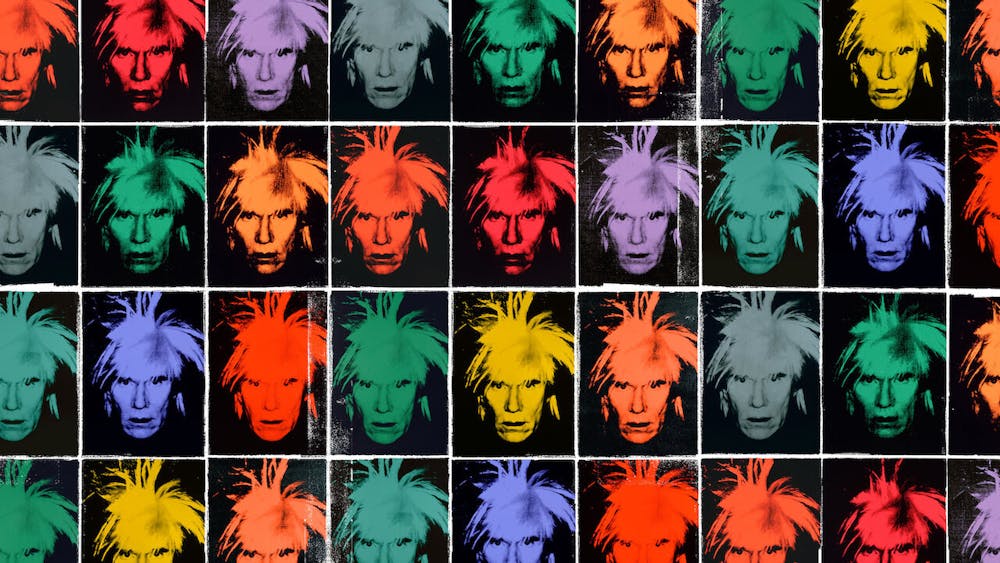Netflix released “The Andy Warhol Series” March 9. For audiences expecting to see a documentary featuring works of pop art icon Andy Warhol, they are in for a surprise. Labeled as a “LGBTQ Documentary,” this series focuses on Warhol’s personal life, highlighting his relationships with Jed Johnson and Jon Gould — the lesser-known side of the artist. The series draws on detailed recounts from Warhol’s diaries, which he started writing after being shot in 1968. This series has garnered attention due to its revolutionary usage of an AI-synthesized Warhol voice to narrate his own diary entries, but the effect of this artificial voiceover is, at best, mixed. With that, let us unpack the series with a classic dissection of “the good,” “the bad,” and “the ugly”.
The Good
“The Andy Warhol Series” offers fresh perspectives into Warhol’s life. Most notably, it refutes the once widely accepted claim that Warhol is asexual, a man seemingly “above sex.” Out of the abundant real footage that the series incorporates, it is not difficult to see where this point of view stemmed from. In footage from one interview, a journalist asks Warhol, “What do you think about sex?” To this, he answers, “Well, I don’t.” Yet, the series suggest that this asexual image is just a facade Warhol puts up in front of his queerness. Responses from Warhol’s former collaborators, friends and acquaintances, among them Jed Johnson’s twin brother Jay Johnson, point to the fact that he had intimate and most likely sexual relationships with Jed, and later Gould. Several entries in his diary also express his confusion on and perhaps even longing for intimacy, though that longing is often counterbalanced by his need for solitude and autonomy: “I wonder if it’s possible to have a love affair that lasts forever.”
Another fascinating yet traditionally overlooked theme that starts manifesting in the beginning of the third series, is his desire to be prototypically American. One interviewee indicated this desire is rooted in his “Andrew Warhola” identity — a second-generation immigrant with working-class parents from Austria-Hungary — and his self-consciousness about his less than appealing appearance. One interviewee in this series said that this covert desire of his is among the factors that drove him to romantic relationships with first Johnson and then Gould, since both of them were “WASP-y” American men. There is a marked irony in that someone like Warhol, who desperately wanted to be “all-American,” created so many works and ideas that became some of the most defining motifs in American popular culture.
The Bad
Although the montage of past footage and photographs provided a glimpse into Warhol’s life in the Silver Factory — his work studio — and in West Village nightclubs such as Studio 54, the cinematography could be better. The average time lapse between photos and footage is often too short, causing a sense of hurriedness and obscuring the logical link from one imagery to the next.
The Ugly
The voice of AI Andy is what really brings the documentary down a few notches. This synthesized voice uses both real audio recordings of Warhol and of Bill Irwin reading Warhol’s diary entries. However high-tech and revolutionary this method may be, its artistic effect is questionable. While watching the documentary series, I found the AI voice overly monotone, which is especially apparent when the voice is narrating Andy’s responses to emotional events, such as Johnson moving out of his apartment.
Frankly, I nearly lost interest after viewing the first episode of this series, but became absorbed in the storyline starting from episode two, despite the less than ideal cinematography of the documentary. If you are someone deeply interested in Warhol’s work, this series is worth the pain of listening to a monotone narration and getting flashed by rapidly-flickering montages.
Get The Chronicle straight to your inbox
Signup for our weekly newsletter. Cancel at any time.
Katherine Zhong is a Trinity junior and local arts editor of The Chronicle's 119th volume.

